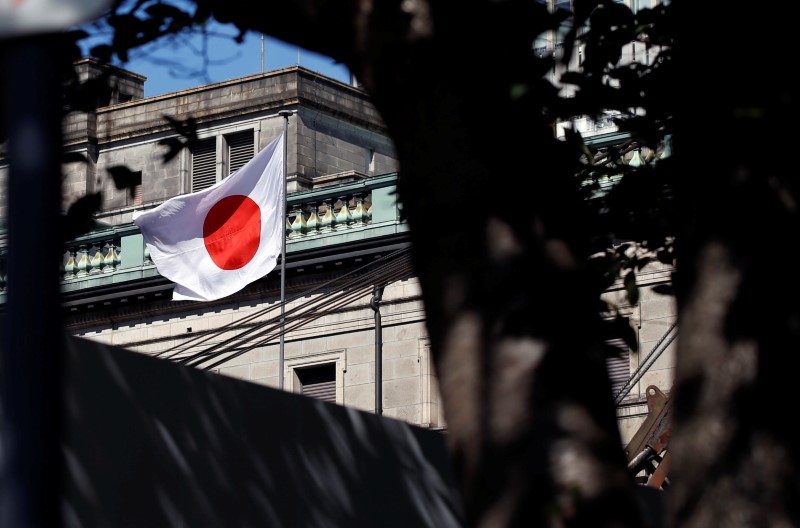By Leika Kihara and Stanley White
TOKYO (Reuters) – Japan’s central bank kept monetary policy steady on Friday and removed a phrase on the timeframe for achieving its 2 percent inflation target, suggesting it is no rush to reach its elusive price goal with the economy in good shape.
As widely expected, the Bank of Japan maintained a pledge to guide short-term interest rates at minus 0.1 percent and the 10-year bond yield around zero percent. The decision was made by a 8-1 vote with board member Goushi Kataoka dissenting.
In a quarterly review of its projections, the BOJ left its inflation forecast for next fiscal year unchanged from three months ago, at 1.8 percent.
It also projected inflation of 1.8 percent for the following fiscal year ending in March 2021, underscoring its view a strengthening recovery will help sustain price growth toward its target.
In a surprise move, however, the BOJ removed a phrase on the timing for achieving its price target in an acknowledgement that meeting the goal was taking more time than expected.
The central bank had been forced to push back the timeframe repeatedly due to subdued inflation. Analysts have criticized as too optimistic the bank’s latest projection made in January that the price goal will be achieved during fiscal 2019.
“Japan’s economy is expected to continue expanding moderately,” the BOJ said in the quarterly report, sticking to its optimistic view on growth. “The momentum for achieving our price target is maintained, but lacks steam,” it said.
Financial markets are on the look-out for what BOJ Governor Haruhiko Kuroda says in his post-meeting briefing on the effect rising U.S. Treasury yields could have on the BOJ’s policy capping Japanese long-term rates around zero percent.
The meeting marks the fifth anniversary since Kuroda, who was reappointed for another five-year term, deployed a massive asset-buying program to break Japan out of deflation and accelerate inflation to his 2 percent goal.
The BOJ’s huge bond purchases have kept Japanese bond yields stable, even as benchmark 10-year U.S. Treasury yields climbed above 3 percent for the first time in four years.
That has caused U.S.-Japan yield differentials to widen in the dollar’s favor, leaving the yen lower in a welcome boost to Japan’s export-reliant economy.
Japanese policymakers generally favor a weak yen as it gives the country’s exports a competitive advantage overseas. It also pushes up import costs and works to accelerate inflation.
Japan’s economy expanded an annualized 1.6 percent in the October-December quarter, marking the eighth straight quarter of gains, on robust global demand and capital spending.
But core consumer inflation stood at 0.9 percent in March, well below the BOJ’s target, as slow wage growth keeps consumers from increasing their spending.
(Additional reporting by Tetsushi Kajimoto and Minami Funakoshi; Editing by Sam Holmes)



















